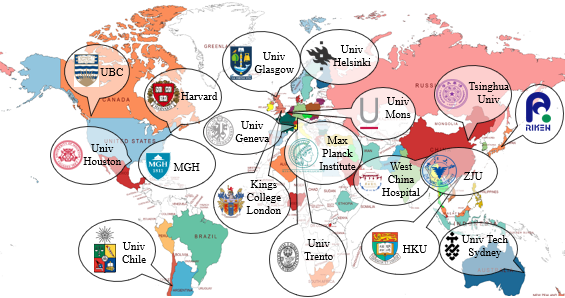Resource
|
ReMAE is a
user-friendly toolbox for removing muscle artifacts from
electroencephalogram (EEG), running under the MATLAB
environment. It implements a series of state-of-the-art methods
for muscle artifact removal from EEG in the literature, and
provides a graphical user interface (GUI). According to the
taxonomy of the existing studies, this toolbox contains three
denoising modes based on the number of input EEG channels, i.e.,
multi-channel, single-channel, and few-channel. Furthermore,
this toolbox modularizes the denoising methods and visualizes
each module. This means that users can readily observe the
detailed denoising performance in each step, and even design a
customized combined method in terms of their own understanding.
In the current literature, there exists no method applicable for all situations due to the complexity of muscle artifacts. The main motivation is to connect neuroscientists, psychologists, and clinicians with both the well-established and cutting-edge methods through a simple and intuitive GUI, and encourage them to extensively investigate different methods in a variety of real scenarios. A tutorial video is available to illustrate how to use this toolbox under different modes along with the MATLAB Package of the toolbox. To gain access to the package of the toolbox, please download the license agreement below. The license agreement should be printed, signed, scanned and returned via email to xunchen@ustc.edu.cn with the subject of "ReMAE access request". Please send the request using your institutional email and state in your email your position, your institution and in 1-2 sentences the purpose for the study. Upon receipt, a link will be sent to your institutional email to download the toolbox. [PDF] The toolbox has been utilized by over 100 BCI labs from 20+ countries, including the labs from US, Canada, UK, Gemany, Switzerland, France, Italy, Finland, Austria, Australia, Japan, Korea, India, Iran, Chile, etc.. In a later comparative study (Barban et al 2021 J. Neural Eng. 18:0460c2), the researchers from Italy and Belgium systematically tested currently prevalent artifact removal methods on not only the widespread biological artifacts, but also the neuromodulatory interferences, either alone or in combination. The absolute best performance was obtained by Dr. Chen¡¯s work, especially when repeated to address multiple artefactual sources. The developed methods were widely adopted by the BCI or even other communities as important tools to support fundamental research, such as the findings of electrocortical modulation during short-term balance learning (Peterson et al 2018 J. Neurophysiol. 120:1998-2010), MI-BCI based stroke rehabilitation (Foong et al. 2020 IEEE TBME 67:786-795), mobile high-density brain imaging (Zhao et al 2021 J. Neural Eng. 18:066041) and so on.
However, this topic is highly worthy of further investigation due to the imperative practical need and the complexity of various artifacts. Recently, Dr. Chen initialized the deep learning-based EEG denoising studies, fully exploiting signal nonlinearity and repeatedly leading state-of-the-art performance. His group is developing ReMAE 2.0 based on recent advancements in this field and hopefully will further facilitate the related research communities. ¡¡ References for ReMAE
References for recent DL-based progress
¡¡ |
¡¡ |
¡¡
